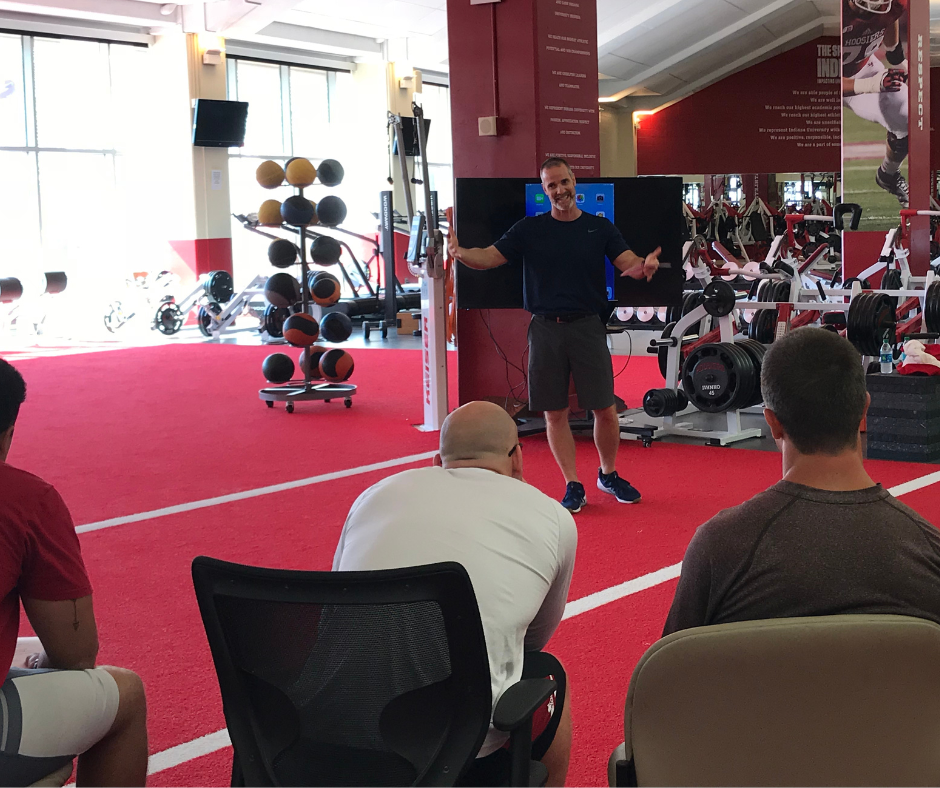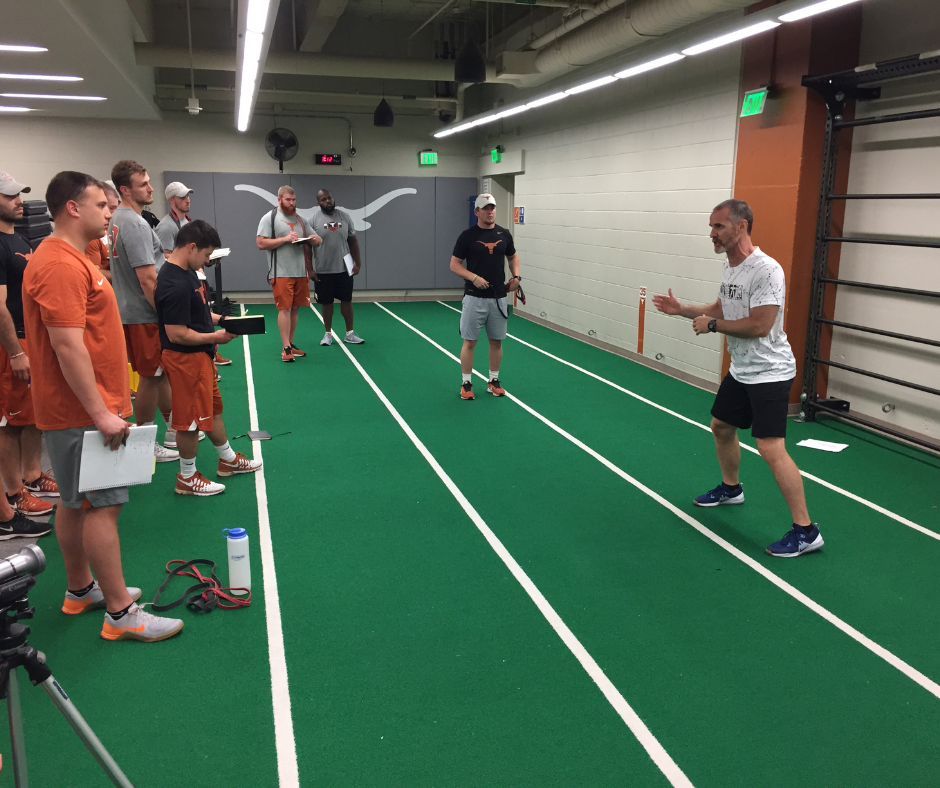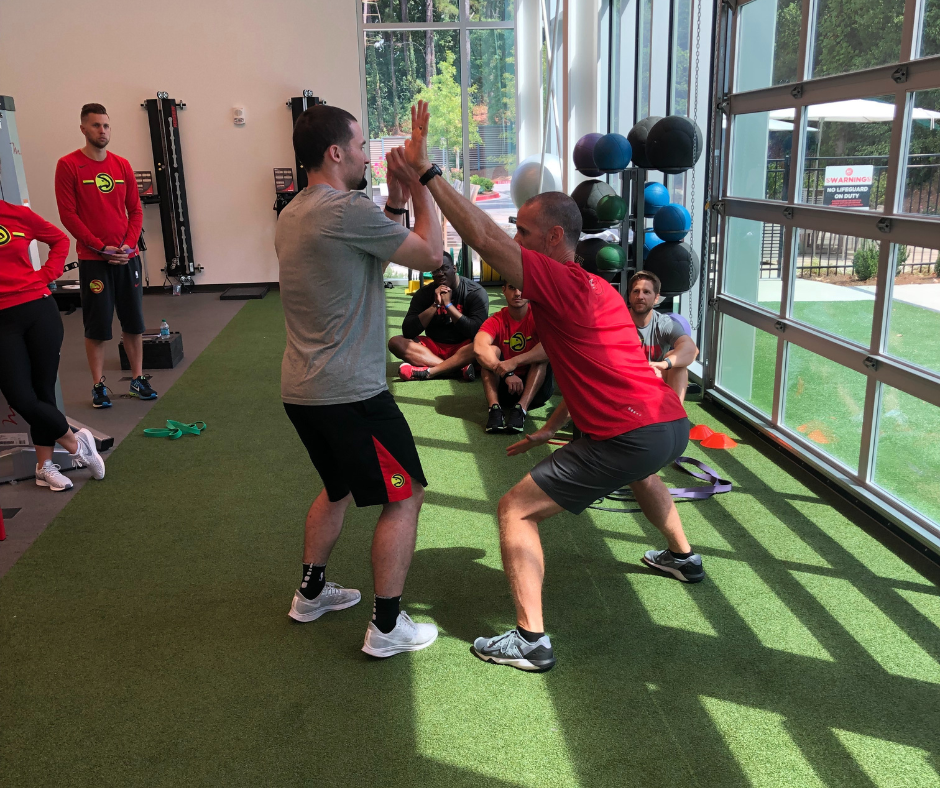Lee Taft’s Full-Day Workshop
Challenging Coaches to Think Bigger and See Human Athletic Movements Through a Bigger Lens
With Lee’s highly dynamic workshop, you won’t be sitting in a chair listening to someone speak all day. He will involve you in a learning-based approach in a practical, lecture, and open discussion format.
Lee’s workshops are set up to give you as much learning and experience as possible. You will walk away having an energized approach to training and gain the practical knowledge to make it happen.
Presentations are 4-5 hours long with the one or two-day option.
7 Movement Patterns of Athleticism
The Foundation of Athletic Speed is built around Lee’s 7 Movement Patterns Approach. The seven foundational patterns allow athletes to build a specialized skill set when appropriate.
- Linear Acceleration
- Max Velocity Sprinting
- Lateral Shuffle
- Lateral Run
- Backpedal
- Hip Turn
- Jumping
Each of these seven patterns has hundreds of variations to allow athletes to meet the movement demands of training and sport. Although each has its unique MODEL OF MOVEMENT, the 7 Patterns have variability based on individual human structures and capabilities to hit positions and postures (biomechanics), physical strength and power (force production), and skill acquisition (learned patterns).
We want to honor the 7 Movement Patterns’ (skill) unique model while respecting acceptable variation within that model.
Reactive Tier System for Speed
A primary principle in Lee’s training system is his Reactive Tier System for Speed. The RTSS gives Lee and his athletes important context-based decision-making for what comes next.
His three-tiered system allows for a progressively more challenging way to assess an athlete’s movement threshold at any stage of development, return to play function, and as a daily readiness screen.
- Tier 1: The known direction of travel with an unknown starting time. The drill typically stops after the distance is met.
- Tier 2: Unknown direction of travel with unknown starting time. The drill typically stops after the distance is met.
- Tier 3: Unknown direction of travel with unknown starting time, with COD being a major driver.
The Reactive Tier System for Speed exposes the need to correct a low-functioning pattern or support a highly organized pattern. Regardless of training teams or individuals, you can have a pre-planned template or an organic plan based on what is assessed.
Reactive Tier System Principles
Lee will drive home his RTS Principles to clearly understand the truths of athletic movement and the effectiveness of the Reactive Tier System.
- The Reactive Tier System relies on human movement laws such as acceleration, action-reaction forces, and mass and momentum control.
- The three tiers give context for choosing the proper corrective or supportive exercise.
- We choose methods (techniques) to DRIVE the actions we want to train.
- We utilize a problem-solving and guided discovery approach to learning.
The Corrective and Supportive System
As athletes perform a Reactive Tier exercise, their quality and proficiency are observed. If we need to correct an individual or entire group, we apply a corrective technique (drill) to meet the demand. When working with teams/large groups and not all athletes struggle with a pattern- the chosen exercise, which is a corrective for those struggling, becomes a supportive technique (drill) for those proficient at the skill. This is a phenomenal way to manage large groups while addressing the needs of individual athletes. Of course, this system can be manipulated in several ways to address the needs more accurately specifically- it just takes planning and organization before each training session.
Movement Concepts
Understanding the concepts helps to establish a framework for why the athletes perform specific actions. These concepts also help the coach build a vocabulary that ties the concept to action. Lee’s concepts are simple and effective at driving home a correlation between what is being implied and how it should be performed. Many of Lee’s concepts will be discussed to bring a certain level of clarity to his teaching methods and principles.
Movement Actions
Lee is famous for his terminologies, such as Plyo-Step, Hip Turn, Directional-Step, Glide Step, and several other terms. These terminologies describe the athlete’s actual ACTION in an organic or “natural” response to the task. These actions will be discussed in great length, and the myths of why many of them shouldn’t be used will be dispelled quickly- backed by my laws of physics and biomechanics.
Movement Methods
This is where the fun begins. Lee will share his movement methods (drills) with you that instantly drive the movement action you want to see. THE TAKE-HOME MESSAGE is the method that should DRIVE the action you want with little to no verbal support or instruction of how to perform the action. He will show you corrective techniques that will “re-organize” athletes who are inefficient or low-functioning in their execution of the action. This is the ART of drill manipulation to get a specific result.
Here’s What Professions had to Say About Lee’s Workshops…
“Lee Taft is a student of athletic movement and is blessed with the ability to see through the complexity of the limitless variations of on-field movements that occur in sport and find the common skills that allow for success. The workshop he put on for our staff really drove home the point that the coaching movement is about “skills, not drills.” He gave us a new perspective on what to look for when watching athletes perform in their sport and during workouts and how we can better tie the two together by creating situations in training that are more competitive, natural, and realistic but still require specific technical execution and coaching. We took away concepts we can easily apply immediately to make our off-season training more effective.”
-Paul Jackson, Director of Football S&C, Ole Miss Rebels
“Lee performed a two-day course at our facility last year. We are a Physical Therapy and Fitness company with multiple locations. He designed a lecture pertinent to the Physical Therapist and our Personal Trainers. His knowledge, understanding, enthusiasm, and, most important, his ability to break down human movement into simplistic forms made this weekend course truly amazing. We still use many exercises, concepts, and teaching methods we learned that weekend. If you are thinking about having Lee come to your facility, you couldn’t ask for a better speaker and delivery of this information. He is the Best!”
–Greg Besson, MSPT, Partner at Moore Physical Therapy and Fitness
“Lee Taft is a pioneer in the sports performance world. His work with multi-directional training was and is revolutionary. I consider him a mentor and one of the biggest influences on me as a sports performance coach. The RYPT program highly reflects his work. I look forward to continuing to learn from Lee.”
– Bobby Smith, Founder & Owner, Reach Your Potential Training, Inc.
“We had Lee work with us here at UT and Lee’s methods and strategies are great for developing on-court tennis speed and movement. It just makes sense and is so easy to implement and progress with our athletes. I would definitely check out his course.”
– Donnie Maib, Assistant Athletics Director for Athletic Performance, University of Texas
To Schedule Your Organization’s Workshop…




